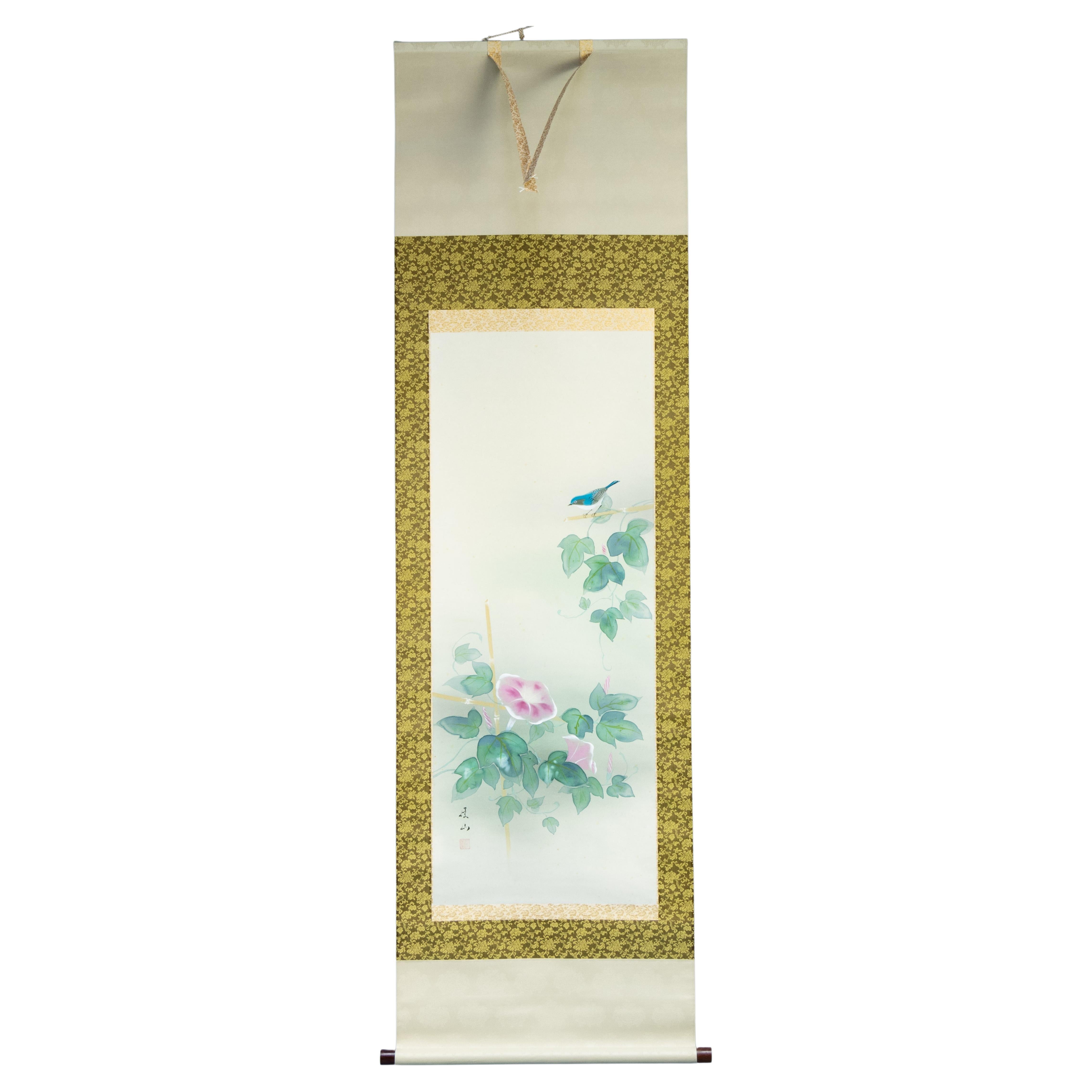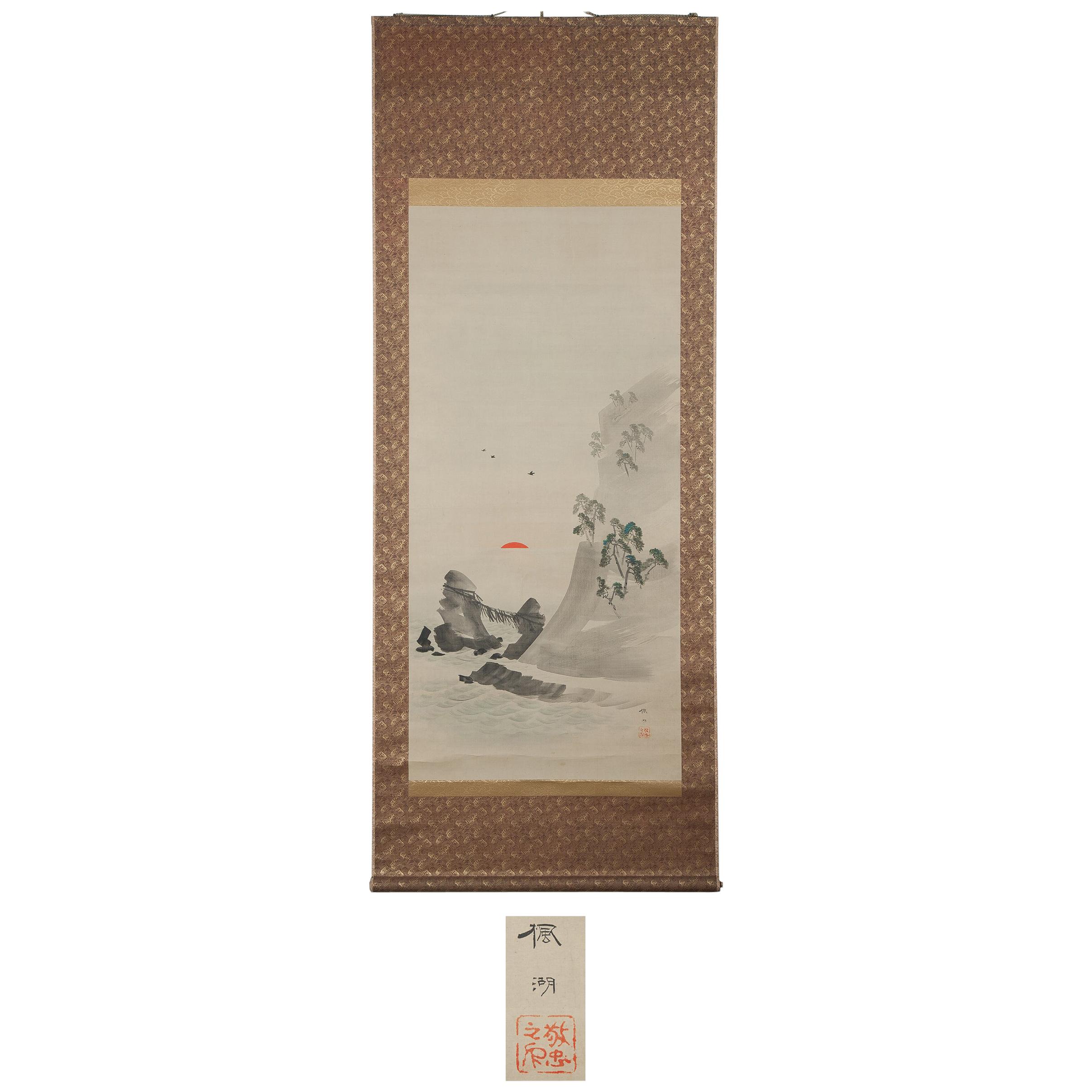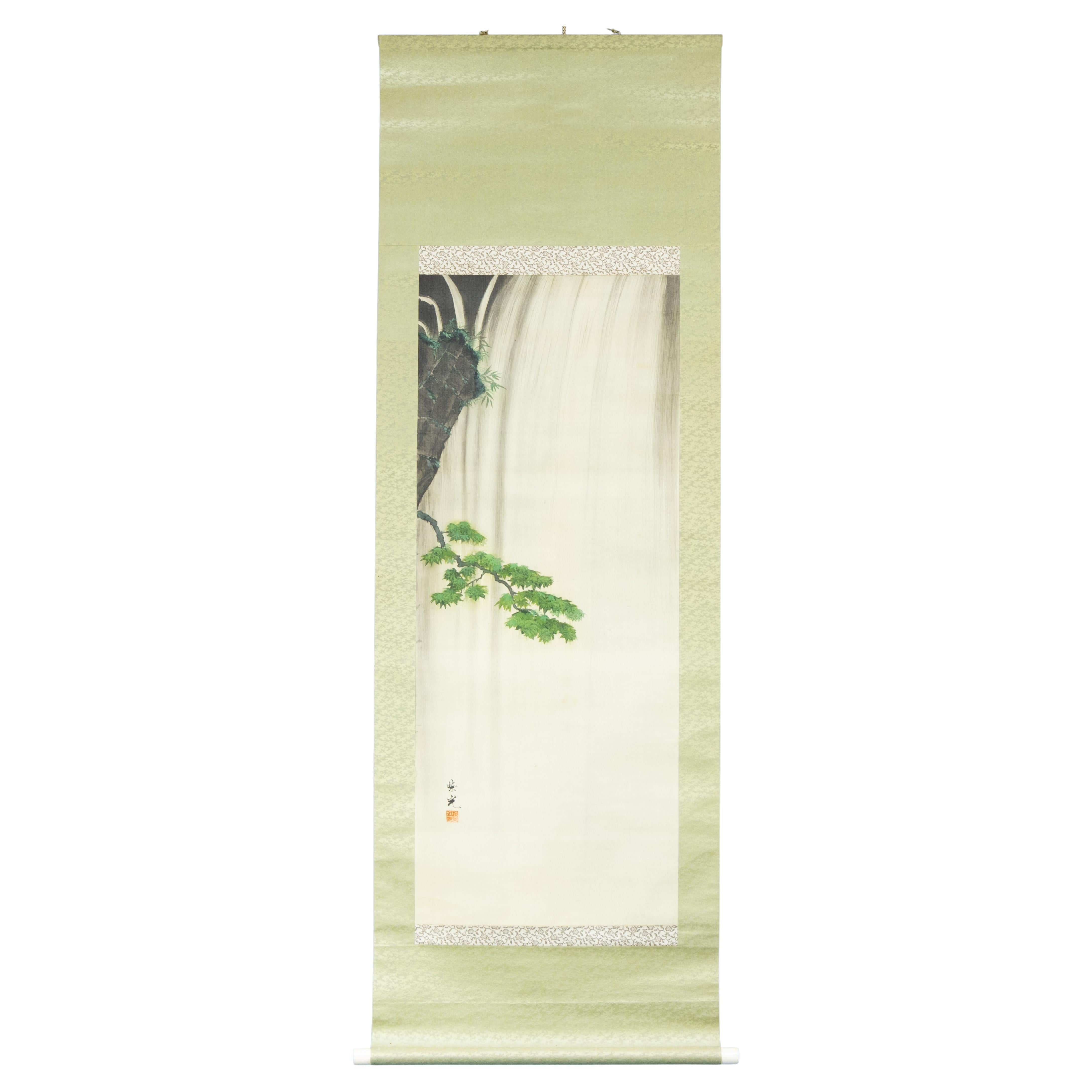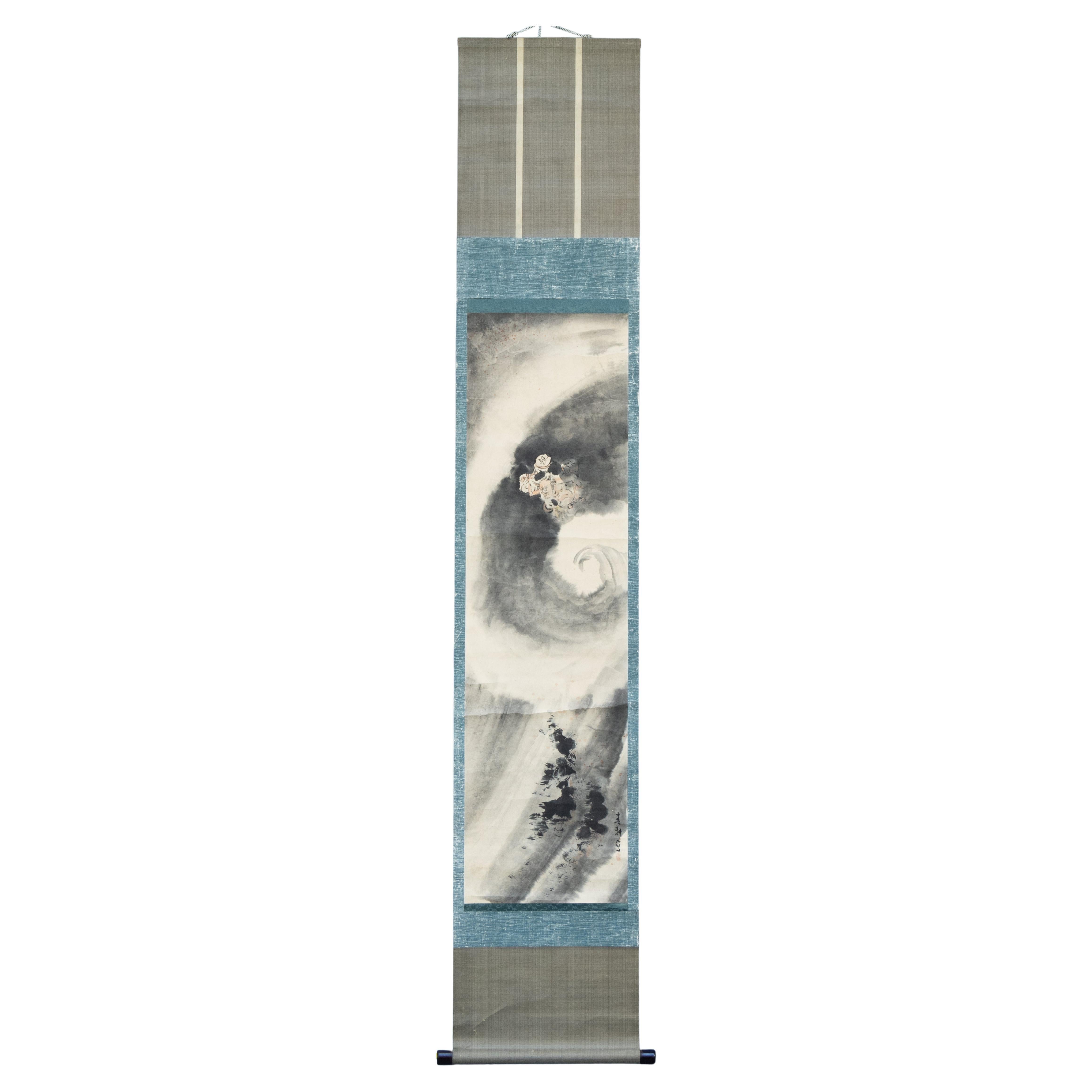Items Similar to Japanese Meiji Period Painting Scroll Nightingale on Branch Japan
Want more images or videos?
Request additional images or videos from the seller
1 of 5
Japanese Meiji Period Painting Scroll Nightingale on Branch Japan
About the Item
Japanse school Nachtegaal op tak met kersenbloesem
Rolschildering / scroll op zijde, houten rollers. A/B 127 x 34.7 / 190 x 45.7
127 x 34.7 / 190 x 45.7
- Dimensions:Height: 74.81 in (190 cm)Width: 18 in (45.7 cm)Depth: 0.04 in (1 mm)
- Style:Meiji (Of the Period)
- Materials and Techniques:
- Place of Origin:
- Period:
- Date of Manufacture:19th Century
- Condition:Wear consistent with age and use.
- Seller Location:Amsterdam, NL
- Reference Number:
About the Seller
5.0
Gold Seller
These expertly vetted sellers are highly rated and consistently exceed customer expectations.
Established in 2015
1stDibs seller since 2019
158 sales on 1stDibs
Typical response time: 11 hours
- ShippingRetrieving quote...Ships From: Amsterdam, Netherlands
- Return PolicyA return for this item may be initiated within 14 days of delivery.
More From This SellerView All
- Nightingale on Branch Meiji Period Scroll Japan 19/20cLocated in Amsterdam, Noord HollandVery Lovely painting.Category
Antique Mid-19th Century Japanese Meiji Paintings and Screens
MaterialsSilk
- Lovely Meiji Period Scroll Paintings Japan Meiji Artist Fuko MatsumotoLocated in Amsterdam, Noord HollandFuko Matsumoto, order of the rising sun, Size: Axis, vertical 212.5 cm next to 84.7 cm Painting, vertical 140.8 cm horizontal 66.7cm ? Differs slightly in size. Condition: The state is good, but, wrinkle-thin stain Biography Fuko Matsumoto 1840-1923 Japan painter. Ibaraki prefecture production. Imperial Art Academy member. Fuko was born as the 3rd son of Matsumoto Soan in Kawachi County of Hitachi Province (Now Inashiki City of Ibaraki Prefecture) on September 14 of the 11th year of the Tenpo era. His real given name was Toshiro. In 1853, when Fuko was 14 years old, he went to Edo and studied painting under Oki Ichiga, who was an official painter of Tottori Domain. Ichiga was a painter who studied the Kano, the Rinpa and the Nanpin styles, and was good at expressing flowers & birds in deep colors. Later, Fuko studied painting under Satake Eikai, who was best pupil of Tani Buncho...Category
Antique 19th Century Japanese Meiji Paintings and Screens
MaterialsFabric
- Japanese Meiji Period Painting Scroll Landscape Nihonga Japan Artist SignedLocated in Amsterdam, Noord HollandJapanse school Esdoorntak voor waterval Rolschildering / scroll op zijde, benen rollers. B 106 x 42.8 / 167 x 56.1 cm 106 x 42.8 / 167 x 56.1 cmCategory
Antique Mid-19th Century Japanese Meiji Paintings and Screens
MaterialsSilk
- Japanese Meiji Period Painting Scroll Water Spirit Japan Artist SignedLocated in Amsterdam, Noord HollandJapanse school Watergeest Rolschildering / scroll op papier, lakwerk rollers. B- 112 x 31.2 / 194 x 35.3 cm 112 x 31.2 / 194 x 35.3 cmCategory
Antique Mid-19th Century Japanese Meiji Paintings and Screens
MaterialsSilk
- Lovely Meiji Period Scroll Paintings Japan Artist Landscape PaintedLocated in Amsterdam, Noord HollandHanging scroll calligraphy "mountains" silk color Zaimei (Baiyun Sang-jin) both box Size Axis ... vertical 196cm horizontal 50.5cm in ... vertical 126cm horizontal 37.5cm.Category
Antique 19th Century Japanese Meiji Paintings and Screens
MaterialsSilk
- Japanese Meiji Period Painting Scroll Crane Landscape Nihonga Japan Artist SignLocated in Amsterdam, Noord HollandJapanse school Kraanvogels en schildpadden in stromend water met Horaisan op de achtergrond Rolschildering / scroll op papier, houten rollers. B 100.5 x 26.7 / 183.5 x 37.7 cm 100....Category
Antique Mid-19th Century Japanese Meiji Paintings and Screens
MaterialsSilk
You May Also Like
- Japan Scroll Painting, Meiji PeriodLocated in Pasadena, CAThis is a wonderful example of a Meiji Period screen painting of Japanese Tanuki or racoon dogs in a landscape. The Tanuki is considered to be a mythical creature Japanese culture. T...Category
Antique Late 19th Century Japanese Meiji Paintings and Screens
MaterialsFabric, Paint
- Japanese Meiji Riverside Scroll Painting, c. 1900Located in Chicago, ILAlthough western painting was initially embraced during Japan’s Meiji period (1868-1912), artists brought on a revival of traditional painting styles as they sought to create a modern Japanese style with roots in the past. This exquisite hanging scroll demonstrates the preference for soft layering of gray tones with judicious use of color. The landscape is rendered in soft ink washes that subtly distinguish between water, mountain, and sky. The scroll painting...Category
Early 20th Century Japanese Meiji Paintings and Screens
MaterialsPaper
- Japanese Gohonzon Buddhist Calligraphy Mandala Scroll Meiji PeriodLocated in Atlanta, GAA Japanese sumi ink calligraphy Buddhist mandala mounted as a paper hanging scroll known as Kakejiku or sometimes Moji mandala. Termed as gohonzon in Japanese, it is a venerated object within Nichiren Buddhism (Hokkeshu; lotus sect). The originally concept was developed by the 13th century Buddhist priest Nichiren to guide the energy of the devotional chanting to...Category
Antique Early 1900s Japanese Meiji Paintings and Screens
MaterialsPaper
- Japanese Gohonzon Buddhist Calligraphy Mandala Scroll Meiji PeriodLocated in Atlanta, GAA Japanese sumi ink calligraphy Buddhist mandala mounted as a paper hanging scroll known as Kakejiku or sometimes Moji mandala. Termed as gohonzon in Japanese, it is a venerated object within Nichiren Buddhism (Hokkeshu; lotus sect). The originally concept was developed by the 13th century Buddhist priest Nichiren to guide the energy of the devotional chanting to...Category
Antique 1890s Japanese Meiji Paintings and Screens
MaterialsPaper
- Antique hanging scroll of Japanese cat/Late Edo-Meiji period/Cat paintingLocated in Sammu-shi, ChibaThis is a picture of a cat drawn by a person named "Toshizumi Nitta" from the end of the Edo period to the beginning of the Meiji period. She is a very simple and cute cat. He is a vassal of the Tokugawa Shogunate, born in Ota City, Gunma Prefecture (southern part of Gunma Prefecture). He was related to the Tokugawa family and lived in a large mansion in the Ota clan in Gunma prefecture. However, the Nitta family's territory was very small, and they were by no means a wealthy vassal. He seems to have lived quite poorly. So he painted cats and sold them to people. The Nitta family continued to draw pictures of this cat for four generations. "Nitta toshizumi" is equivalent to the fourth generation. During the Edo period, sericulture was thriving in the Kanto region. Cats were said to be the gods of silkworms, as they drive away mice, the natural enemies of silkworms. It was the Nitta family who drew such a cat on paper, pasted it in the silkworm chamber, and sold it as a mouse repellent. There were also other monks who painted pictures of cats, but the Nitta family in particular was related to the Tokugawa family, so people believed that paintings of cats had special powers. , a lot of paintings...Category
Antique Late 19th Century Japanese Edo Paintings
MaterialsPaper
- Japanese Meiji Hanging Scroll of Ayu Fish, c. 1850Located in Chicago, ILAlthough Western painting was initially embraced during Japan’s Meiji period (1868–1912), artists brought on a revival of traditional painting styles as they sought to create a moder...Category
Antique Mid-19th Century Japanese Meiji Paintings and Screens
MaterialsPaper, Silk
Recently Viewed
View AllMore Ways To Browse
Japanese Japan
Antique Japanese Furniture
Japanned Antique Furniture
Japanese Antique Furniture
Japanese Furniture Antique
Japanese Silk Paintings
Antique Japanese Scrolls
Japanese Antique Scroll
Japanese Antique Scrolls
Japanese Scroll Art
Antique Japanese Silk Paintings
Antique Japanese Silk Painting
Japanese Antique Silk Painting
Asian Scroll Painting
Antique Rollers
19th Century Japanese Scroll
Antique Japanese Painting On Silk
Antique Japanese Paintings On Silk





